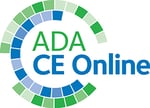Success rates for immediately loaded fixed full-arch implant-retained prostheses
Dentists who provide fixed full-arch implant-retained prostheses for patients on the day of implant placement can expect a high success rate. Insertion torque appears to have no bearing on initial implant survival. The findings were published in the May/June issue of The International Journal of Oral and Maxillofacial Implants.
Authors designed the study to measure the success rate of implant-retained prostheses in the intention-to-treat category—that is, prostheses placed on the same day as implant placement. Intention-to-treat is a specific statistical categorization, and it implies that all patients or participants who entered a study are reported on (intent) and all outcomes are reported, regardless of exclusions, adverse events, or loss from recall. In this study, the authors wanted to measure the correlation between insertion torque and implant survival.
The study included 314 patients (154 female, 160 male) representing 441 dental arches to receive immediately loaded fixed full-arch implant-retained prostheses. All implants and prostheses were placed in the maxilla, mandible, or both from August 1, 2015, through December 31, 2016. A total of 131 patients received full-arch prostheses in both arches, and 122 patients received implants only in the maxilla. Another 59 patients received implants only in the mandible.
Surgical treatment included tooth extraction, alveoloplasty, and implant placement. Authors recorded insertion torque for each implant. Transmucosal abutments were then placed. A screw-retained conversion prosthesis was then constructed. An acrylic resin dental prostheses with titanium copings was made. Dentists recorded centric jaw relationships, retrieved the prostheses, and poured and mounted a cast to convert into a fixed provisional prosthesis. Provisional prostheses were reinserted into the implant abutments using screw retention and adjusted for patient comfort.
Dentists made 296 definitive prosthesis using a titanium frame with acrylic wrapped denture teeth and 115 prostheses from monolithic zirconia. Cantilever length was limited to 15 millimeters in the mandible and 12 mm in the maxilla. Patients were seen for follow-up appointments at 10 days, 6 months, 1 year, and yearly thereafter.
A total of 1,903 implants were placed to support full-arch prostheses (1,144 in the maxilla, 759 in the mandible). A total of 440 of the 441 arches were successfully treated. The average number of implants placed in the maxilla and mandible was 4.3 and 4.1, respectively. Authors found 36 implants that failed to achieve osseointegration (28 in the maxilla, 8 in the mandible), for a 98.1% overall survival rate. Survival was 97.6% in the maxilla and 98.9% in the mandible.
An insertion torque of at least 35 newton centimeters was used for 89.4% of all implants, while an insertion torque of 15 through 34 Ncm was used in 6.5% of implants and an insertion torque of less than 15 Ncm was used in 4.2% of implant sites. No implants that failed to achieve osseointegration recorded an insertion torque of less than 35 Ncm. Overall insertion torque showed no difference in implant survival.
The study’s mean observation time was 366 days until definitive restoration placement. The longest observation time was 972 days, and the shortest was 14 days. Implant failure occurred at 57 days in the maxilla and at 104 days in the mandible. The average time to observed implant mobility was 127 in the maxilla and 144 days in the mandible.
“The ability to address this question of intention to treat,” the authors concluded, “to identify that that intention could be met at an exceedingly high rate, is perhaps the most compelling result of this investigation.”
Read the original article here or contact the ADA Library & Archives for assistance.

Buccal bone thickness compared in patients with large bony defects and those with small or no bony defects
Dentists can treat patients with large bony defects at failing teeth by evaluating or creating a bone layer in the facial aspect of the proposed implant site. This finding is from a study published in the February issue of Clinical Implant Dentistry and Related Research.
Authors designed the study to compare buccal bone thickness at the time of extraction in patients with large bony defects with buccal bone thickness (BBT) in patients with small or no bony defects. They made the comparisons at 1 month and 1 year after final restoration.
A total of 40 patients with a failing tooth in the maxillary esthetic region received immediate implant placement and delayed provisionalization. Patients were evenly split into a test group (large bony buccal defect) and a control group (small or no bony buccal defects). Authors defined a large bony buccal defect as at least 2 millimeters and a small bony buccal defect as less than 2 mm. The mean age of the test group (11 men, 9 women) was 43.7 years (range, 18-63 years). Implant location included central incisor (12), lateral incisor (5), and canine (3). The mean age of the control group (8 men, 12 women) was 42.3 years (range, 23-66 years). Implant location included central incisor (13), lateral incisor (6), and canine (1). Authors obtained cone-beam computed tomographic scans preoperatively and 1 month and 1 year after restoration placement to measure changes in BBT over time.
An oral and maxillofacial surgeon removed failing teeth in the test group, cleaned the alveolus, and harvested bone grafts from the maxillary tuberosity. The surgeon shaped the tuberosity bone graft with forceps to match the labial bony defect. The graft was placed in the extraction socket, with the cortical side facing the periosteum, under the periosteum covering the labial plate defect. Analogous bone was packed tight into the remaining space. The surgeon placed the implant at a depth of 3 mm apical to the most apical aspect of the prospective clinical crown. A soft-tissue graft harvested from the tuberosity region was placed on top of the bone graft and implant.
The surgeon uncovered the implant 3 months later, an implant-level impression was obtained, and a provisional restoration was placed within 8 hours. A final restoration was placed 12 weeks later. The control group underwent the same procedures except no bone graft from the maxillary tuberosity was made. A mixture of autologous bone and spongiosa granules (0.25-1 mm) were used to fill the remaining space between the implant and buccal bony wall.
Authors used the Mann-Whitney U test to compare changes in midfacial mucosal level in millimeters at 1 year with the gingival level of the preoperative failing tooth and pocket probing depth in millimeters on the facial aspect of the implant at 1 year. They used the pink esthetic score at 1 year to compare scores in esthetic appearance.
The median distance from the outer surface of the buccal bone to the surface of the future implant at all different positions before treatment was 0 mm in the test group. The median distance of 6 positions from the outer surface of the buccal bone to the surface of the future implant before treatment varied from 1.99 through 2.28 mm in the control group. The median BBT in the test group 1 year after definitive crown placement ranged from 0.84 through 1.09 mm. The median BBT in the control group 1 year after definitive crown placement at all 6 positions was 1 mm. Authors noted no significant difference in BBT between groups at 1 month and 1 year.
Read the original article here or contact the ADA Library & Archives for assistance.

Study tracks use of immediately loaded full-arch fixed prosthesis supported by 3 implants in edentulous mandibles
An immediately loaded, 3-implant full-arch supported fixed prosthesis may be a viable strategy for mandibular rehabilitation in edentulous patients with maxillary complete dentures, according to a study published in the May/June issue of The International Journal of Oral and Maxillofacial Implants.
Authors designed the 5-year retrospective analysis to measure the clinical and radiographic outcomes of edentulous mandibles rehabilitated with immediately loaded fixed prostheses supported by 3 implants. The study sample included 58 patients (35 women, 23 men; mean [standard deviation] age, 63.3 [7.9] years; range, 46-81 years) who underwent oral rehabilitation with complete mandibular dentures with immediate loading.
Authors used digitized panoramic radiographs to measure bone loss and used the implant length and distance from the most coronal part of the bone support to the implant apex as landmarks. They calculated mean bone loss at each implant by subtracting the measurement of the implant apex from the implant length. Authors also analyzed the condition of the acrylic portion of the denture, occlusion (satisfactory or unsatisfactory), bar (fractured or not fractured), presence of cover screws (satisfactory or unsatisfactory), tightness of prosthesis and implant abutment (loose or not loose), and measurement of the lever and resistance arms (in millimeters).
Authors calculated absolute and relative frequencies and used the t test to measure the difference in mean radiographic bone loss between the central and distal implants. The authors also used analysis of variance to compare mean bone loss among the central, mesial, and distal implants and Pearson correlation coefficient to measure the relationship of bone loss to lever and resistance arm length.
Authors noted 5 implant failures in 4 patients, for a 97.13% overall survival rate. They observed 27 prosthetic complications during the follow-up period, for a 93.1% overall success rate. Mean (standard deviation) bone loss was 2.11 (0.84) mm at the left implant, 2.65 (1.06) mm at the center implant, and 2.11 (0.8) mm at the right implant. Authors recorded the greatest mean and median bone loss values at the center implant (2.65 mm and 2.47 mm, respectively). They also noted a statistically significant difference between bone loss at the center implant and bone loss at the distal implants (P = .001), but no difference between the left and right implants.
One-half of the 54 patients in the study experienced at least 1 prosthetic complication. Among these patients, 10 experienced cover screw issues, 7 loosening of the prosthetic screw, 13 torque loss or insufficient torque (20 newton centimeters) of the prosthetic abutment, 5 issues with the prosthetic portion of the prosthesis, and 8 unsatisfactory occlusion. No implant bar fractures were observed.
Among patients with problems related to the length of the lever and resistance arms, 37% had a lever arm shorter than the resistance arm, 40.7% had a lever arm up to 2.5 times the length of the resistance arm, and 22.2% had a lever arm more than 2.5 times longer than the resistance arm. Authors saw no association with bone loss or prosthetic complications and the length of a cantilever arm.
While concluding that the technique is viable, authors also conceded a potential drawback of the triple-implant design.
“The prosthetic failures documented in this study were all due to implant loss,” the authors said. “This lays bare a disadvantage of the technique: if any one of the implants fails, the prosthesis is condemned.”
Read the original article here or contact the ADA Library & Archives for assistance.

Immediate and early loaded implants with a chemically modified SLA surface have high long-term survival rates
Implants with a chemically modified surface placed in the posterior maxilla or mandible in immediate and early loading protocols showed high long-term survival rates. The finding is from 10-year follow-up study published in the February issue of Quintessence International.
Authors designed the study to measure the long-term (10-year) performance of implants in patients who received them the day of surgery (immediately) or 28 through 34 days later (early loading). The goal was to compare the change in crestal bone levels from day of surgery (baseline) and 10 years between the immediate and early loading groups. Authors also wanted to track implant survival and measure the change in bone level from baseline through 10 years between the maxilla and the mandible.
The study is a follow-up of an original 3-year clinical trial. Patients in the original trial received 1 through 4 implants with the SLActive (Straumann) surface to replace teeth in the posterior maxilla or mandible. All implants were placed in healed implantation sites and had natural teeth or fixed prostheses in the opposing dentition. Provisional prosthetic restorations were placed either the day of surgery or 28 through 34 days later. Permanent restorations were placed 20 through 23 weeks after surgery.
Authors of the original clinical trial obtained periapical radiographs at baseline (day of implant surgery), placement of permanent restoration, and after 12, 24, and 36 months. Authors of the current study obtained radiographs 8 and 10 years after surgery using the same customized film holder beam-aiming devices used in the original trial. The authors used radiographs to measure mean change in crestal bone level (measured from the mesial and distal aspects to the implants) over time. Authors also measured bone level from the implant shoulder to the first visible bone-to-implant contact.
Authors of the current study recorded patient-reported outcomes (comfort, appearance, ability to chew and taste) as either excellent, good, fair, or poor. They also recorded clinical parameters (attachment level, probing pocket depth, O’Leary plaque index score) at 10 years. Authors used standard deviations (SDs) for continuous variables. They measured changes in crestal bone levels from the mean of the medial and distal bone level measurements for each implant. Authors used a Kaplan-Meier survival analysis to measure implant survival rates in the immediate and early loading groups and applied a log rank test to compare implant survival rates between the 2 treatment groups. They also used the Spearman-Brown (rank) correlation test to measure the influence of initial implant placement depth on bone loss.
A total of 56 patients (26 and 30 in the immediate and early placement groups, respectively) were chosen for the current study. Their mean (SD) age at the start of the original study was 46 (11) years (range, 21-71 years), with an equal split between male and female patients (28 patients each). A total of 42 patients had 1 implant, 12 had 2 implants, and 2 had 3 implants. A total of 34 implants were placed in the maxilla (15 and 19 in the immediate and early loading groups, respectively), and 38 were placed in the mandible (18 and 20 in the immediate and early loading groups, respectively).
The overall implant survival rate was 97.6% (98.2% and 97.1% in the immediate and early loading groups, respectively). At least 80% of patients in both groups rated comfort, appearance, and ability to chew and taste as excellent. General satisfaction was excellent for more than 90% of patients after 10 years. More than 65% of patients in both groups had an O’Leary plaque index score below 25% after 10 years. The mean total pocket probing depth was 2.6 mm in both groups, and the mean clinical attachment level was 0.8 mm and 0.9 mm in the immediate and early loading groups, respectively.
Authors of the current study noted a significant change in mean (SD) crestal bone levels 10 years after implant placement (–2.00 [1.19] millimeters and –1.37 [1.06] mm) in the immediate and early loading groups, respectively. After the initial remodeling phase (5-6 months), authors noted the significant difference (SD) in bone level changes up to 10 years was –1.25(0.99) mm and –0.89 (1.11) mm in the immediate and early loading groups, respectively.
Authors of the current study noted no significant difference between treatment groups for crestal bone level change over the 10-year period in the mandible (P = .792) but observed significantly greater bone level change over 10 years in the maxilla for the immediate loading group (P = .006). They found bone level at baseline in the maxilla and mandible to be a significant covariate (P = .002 and P = .011, respectively) but noted that the difference disappears in crestal bone level from implant surgery through 10 years in the maxilla.
Read the original article here or contact the ADA Library & Archives for assistance.
Implantology CE courses
At Implant Direct, we offer a diverse and comprehensive list of implant-dentistry courses to meet all your learning and CE needs. Each class is designed to meet the specific needs of the modern implant marketplace. Featuring a variety of hands-on training sessions, interactive lectures and live surgery observation classes, our classes are taught by some of the most respected names in the field. From introductory courses that cover the basic surgical principles and protocols, hybrid and full arch restoration cases to advanced courses covering the latest technological innovations and the future of implantology, we’re here to help each clinician reach their full potential. For more information, visit our Education Center.
Learn to confidently implement and manage implant therapy
Dental implants have come a long way, and you have more treatment options than ever to help improve your patients’ oral health. But to get the best results, you need to know the latest findings in this discipline and explore what is best for your individual patients. These CE courses cover several angles of this topic, from fabricating prostheses to determining if bone reduction is needed to avoiding possible complications. You’ll learn the correct cementation guidelines, the appropriate use of prophylactic antibiotics, the causes of fistulas, and more.
- Prophylactic Antibiotic Use in Dental Patients with Prosthetic Joins: What is the Evidence?
- Treatment of a Failing Dentition Part 2: Fabrication of Immediates to Extractions to Implant
- Clinical Complications in Fixed Prosthodontics: Causes, Prevention, and Management, Part 4
Visit ADACEOnline.org to find out more information about these and other osseointegration courses.
Academy of Osseointegration 2020 Annual Meeting preview “Evolving Technologies in Implant Dentistry”
![]() “Evolving Technologies in Implant Dentistry” is the theme of the Academy of Osseointegration’s (AO) 35th Annual Meeting, March 18 - 21, 2020, at the Washington State Convention Center in Seattle, Washington.
“Evolving Technologies in Implant Dentistry” is the theme of the Academy of Osseointegration’s (AO) 35th Annual Meeting, March 18 - 21, 2020, at the Washington State Convention Center in Seattle, Washington.
An estimated 3,000 dental implant professionals from more than 50 countries are expected to attend this premier multi-specialty meeting. Led by some of the most distinguished speakers in the field, highlights will include:
- Opening Symposium: "Innovation and Technology" with keynote speaker Dr. Catherine Mohr from the Intuitive Foundation, pioneers of robotic-assisted surgery and the da Vinci surgical robot.
- Surgical Tracks: Virtual Planning/Guided Surgery; Technology for Bone Augmentation.
- Prosthetic Tracks: Update on New Materials/Technology; Digital Prosthetic Dentistry.
- Hands-on Workshops: NEW format for 2020.
- Masters Sessions: Interact directly with world-renowned presenters in a smaller setting.
- Abstract Sessions showcasing the latest research
- Corporate Forums: New products to be exclusively introduced.
- Comprehensive Exhibit Hall: Over 120 booths providing a first-hand look at some of the products discussed by meeting presenters.
- Expanded President's Reception: Complimentary admission, entertainment and transportation to the Museum of Flight, historic birthplace of the Boeing Airplane Company.
A meeting preview is available. Look for advance registration to open in late October. Register early to take advantage of discounts and guarantee limited attendance sessions. Mark your calendar and plan to attend.

The consulting editor for JADA+ Scan — Osseointegration is Clark M. Stanford, DDS, PhD, Distinguished Professor and Dean, University of Illinois at Chicago College of Dentistry and President-elect, Academy of Osseointegration Board of Directors. |
|





